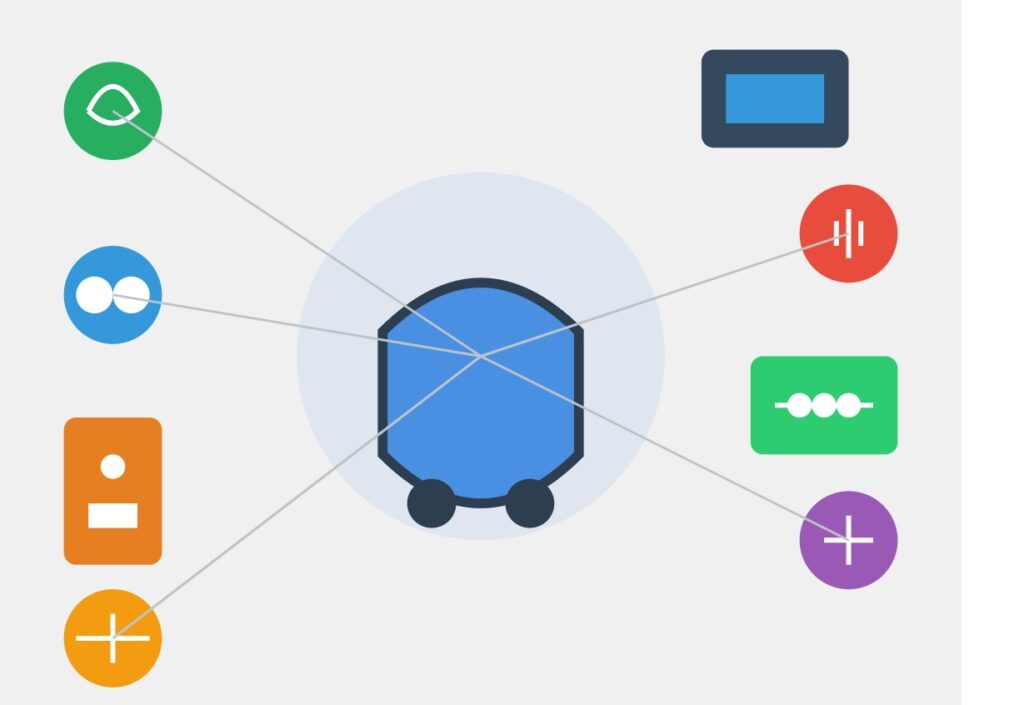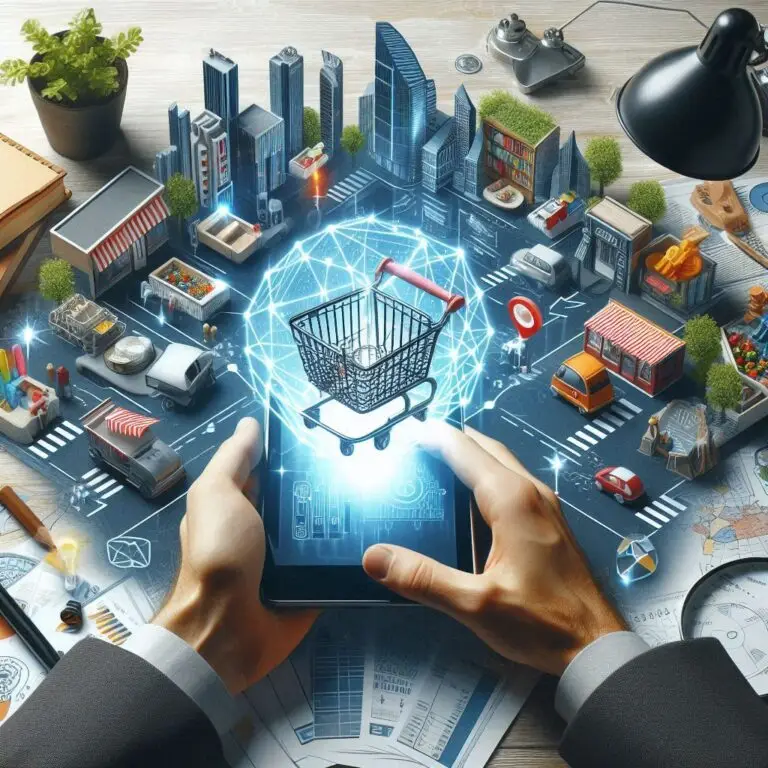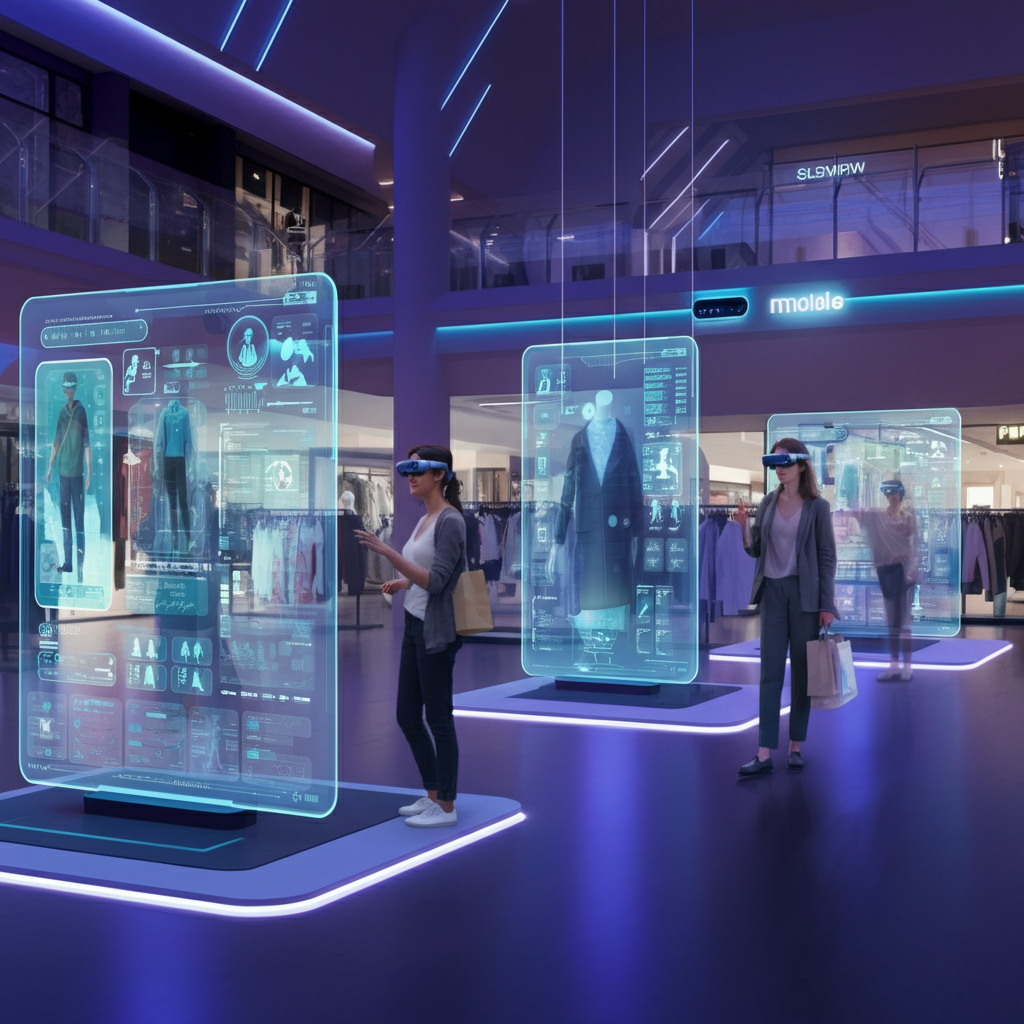As we venture into 2024, the e-commerce landscape continues to evolve at a breakneck pace, reshaping how businesses and consumers interact in the digital marketplace. From cutting-edge technologies to shifting consumer behaviours, the world of online shopping is undergoing a transformation that promises to redefine the retail experience. In this blog post, we’ll explore the key trends, innovations, and predictions that are set to dominate the e-commerce sector in 2024.
The Rise of Augmented Reality (AR) Shopping Experiences
One of the most exciting developments in e-commerce is the widespread adoption of augmented reality (AR) technologies. In 2024, we’re seeing a surge in retailers leveraging AR to bridge the gap between online and in-store shopping experiences. Furniture retailers, for instance, are allowing customers to visualize how a sofa or dining table would look in their living spaces before making a purchase. Fashion brands are using AR-powered virtual try-ons, enabling shoppers to see how clothing items would look on them without stepping into a fitting room.
This technology isn’t just a gimmick; it’s proving to be a powerful tool for reducing return rates and increasing customer satisfaction. As AR becomes more sophisticated and accessible, we can expect to see it become a standard feature across various product categories, from cosmetics to electronics.
E-commerce: AI-Driven Personalization Takes Center Stage
Artificial Intelligence (AI) has been a buzzword in e-commerce for years, but in 2024, we’re witnessing its true potential unfold. AI-driven personalization has moved beyond simple product recommendations to create hyper-personalized shopping experiences. E-commerce platforms are now using AI to analyze vast amounts of data, including browsing history, purchase patterns, and even social media activity, to tailor every aspect of the shopping journey to individual preferences.
From personalized homepages and product suggestions to customized email marketing campaigns and dynamic pricing strategies, AI is helping retailers create a unique experience for each customer. This level of personalization not only enhances the shopping experience but also significantly boosts conversion rates and customer loyalty.
The Emergence of Voice Commerce
As voice-activated devices become increasingly prevalent in homes and on mobile devices, voice commerce is gaining traction. In 2024, we’re seeing a growing number of consumers using voice assistants like Amazon’s Alexa, Google Assistant, and Apple’s Siri to make purchases, check order statuses, and even compare products.
Retailers are optimizing their platforms for voice search and developing voice-specific shopping interfaces. This shift is particularly significant for routine purchases like groceries and household items, where convenience is a key factor. As natural language processing technology improves, we can expect voice commerce to become more sophisticated, handling complex queries and providing more nuanced product recommendations.
Sustainable E-commerce Takes the Spotlight

Sustainability is no longer just a buzzword; it’s become a critical factor in consumers’ purchasing decisions. In 2024, we’re seeing a surge in eco-friendly e-commerce practices. Retailers are focusing on sustainable packaging, carbon-neutral shipping options, and transparent supply chains.
Many e-commerce platforms now offer “green” filters, allowing environmentally conscious consumers to easily find products that align with their values. Some innovative companies are even implementing circular economy models, facilitating the resale and recycling of products to reduce waste.
This trend isn’t just about meeting consumer demands; it’s also about future-proofing businesses in a world where environmental regulations are becoming increasingly stringent.
The Evolution of Social Commerce
Social media platforms have been flirting with e-commerce features for years, but 2024 marks a significant leap forward in social commerce. Platforms like Instagram, TikTok, and Pinterest have evolved into full-fledged shopping destinations, blurring the lines between social interaction and online shopping.
Live shopping events, where influencers or brand representatives showcase products in real-time video streams, have become particularly popular. These events combine entertainment, social interaction, and shopping, creating an engaging and immersive experience that traditional e-commerce struggles to match.
Moreover, the integration of AR features within social platforms allows users to virtually try on products or see how they look in their environment, all without leaving their favourite social app.
The Rise of Subscription-Based E-commerce
Subscription models are not new to e-commerce, but they’re experiencing a renaissance in 2024. From software and streaming services to physical products like meal kits and beauty boxes, subscription-based e-commerce is booming.
What’s driving this trend? Convenience and personalization. Consumers appreciate the ease of receiving regular deliveries of products they use frequently, and they value the curated experience that many subscription services offer. For businesses, subscription models provide predictable revenue streams and valuable data on consumer preferences.
We’re also seeing innovative hybrid models emerge, combining subscription services with traditional e-commerce, offering subscribers exclusive discounts, early access to new products, or personalized recommendations.
Blockchain and Cryptocurrency in E-commerce
While still in its early stages, the integration of blockchain technology and cryptocurrency in e-commerce is gaining momentum in 2024. Some forward-thinking retailers are now accepting cryptocurrencies as payment, appealing to a growing demographic of crypto enthusiasts.
Beyond payments, blockchain technology is being used to enhance supply chain transparency, verify product authenticity, and implement more secure and efficient loyalty programs. As the technology matures and becomes more accessible, we can expect to see wider adoption across the e-commerce sector.
The Expansion of Quick Commerce
The demand for instant gratification has given rise to “quick commerce” or “q-commerce” – the ultra-fast delivery of small quantities of goods to customers. In 2024, we’re seeing this model expand beyond just groceries and restaurant meals to encompass a wide range of products.
E-commerce giants and startups alike are investing heavily in local fulfilment centres and partnerships with last-mile delivery services to offer delivery times as short as 15 minutes in some urban areas. This trend is reshaping consumer expectations and forcing traditional retailers to rethink their delivery strategies.
Enhanced Focus on Cybersecurity and Privacy
As ecommerce continues to grow, so do the risks associated with online transactions. In 2024, we’re seeing an increased focus on cybersecurity and privacy protection. Retailers are implementing more robust security measures, including multi-factor authentication, AI-powered fraud detection, and end-to-end encryption.
Moreover, with data privacy regulations like GDPR and CCPA in full effect, e-commerce platforms are becoming more transparent about their data collection and usage practices. Many are offering customers greater control over their personal information, including the ability to easily view, download, or delete their data.
The Integration of IoT in E-commerce
The Internet of Things (IoT) is making its mark on e-commerce in 2024. Smart home devices, wearables, and even vehicles are becoming new touchpoints for online shopping. Imagine your refrigerator automatically ordering milk when you’re running low, or your car scheduling a service appointment when it detects an issue.
This integration of IoT with e-commerce is not only creating new sales channels but also providing retailers with valuable data on product usage and consumer behavior, enabling them to offer more personalized and timely services.
Conclusion: Embracing the Future of E-commerce
As we navigate through 2024, it’s clear that the e-commerce landscape is more dynamic and innovative than ever. From AR-powered shopping experiences and AI-driven personalization to voice commerce and sustainable practices, the digital marketplace is evolving to meet the changing needs and expectations of consumers.
For businesses, staying ahead in this rapidly changing environment requires a willingness to embrace new technologies, a commitment to sustainability, and a focus on creating personalized, seamless shopping experiences. Those who can successfully adapt to these trends will be well-positioned to thrive in the e-commerce ecosystem of 2024 and beyond.
As consumers, we can look forward to more convenient, engaging, and tailored shopping experiences that blur the lines between the digital and physical worlds. The future of e-commerce is here, and it’s an exciting time to be part of this digital revolution.


